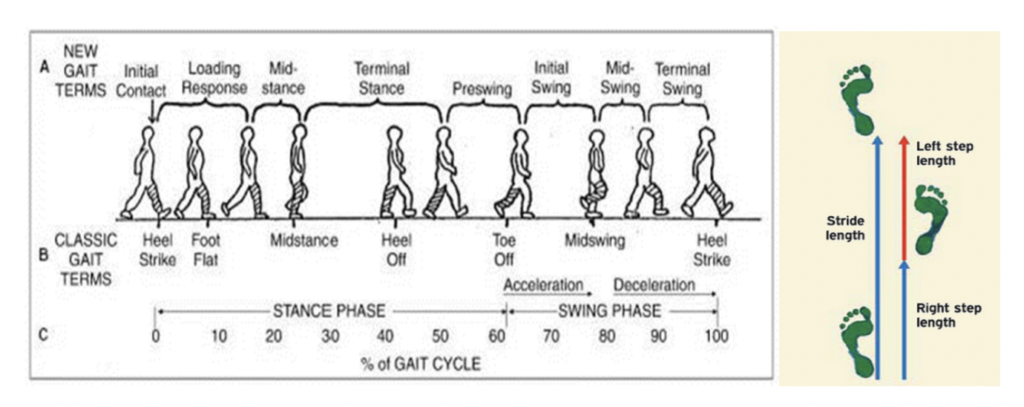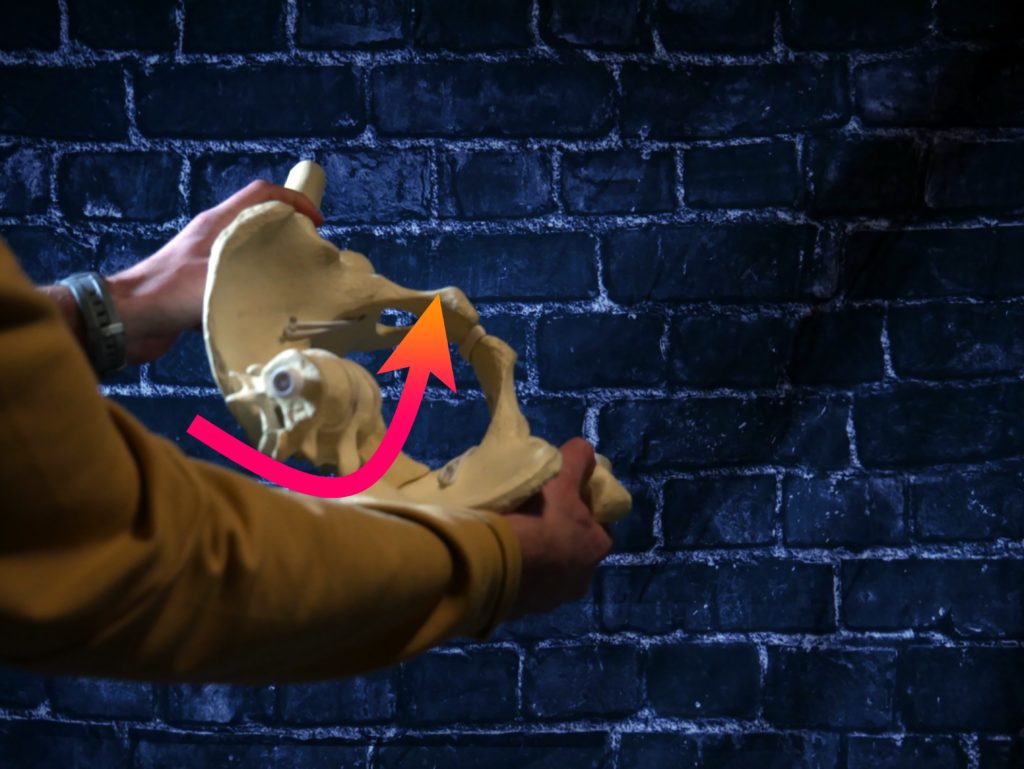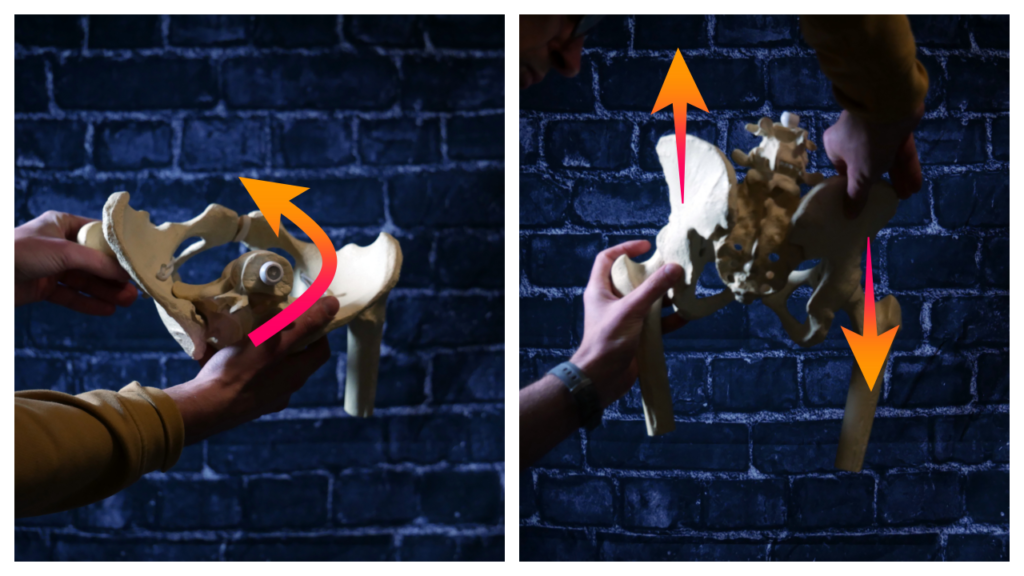 I Worked with 20000 Patients and Learned This
I Worked with 20000 Patients and Learned This
The Zac Cupples Show
🏃 Want to get stronger and move better at the same time? Let us coach you: If you’re new here, I’m Zac Cupples. I’m a physical therapist and movement coach who’s spent the last 14+ years helping people move better, hurt less, and train smarter. I’ve worked across private practice, professional sports (including the NBA), and online coaching. My specialty is blending biomechanics, pain science, and fitness to help people actually feel and move better. We don’t just chase symptoms here. Here’s how I got here: Age 25: Earned my Doctorate of Physical Therapy (DPT) Age 26:...
info_outline The Last Shoulder Podcast You'll Ever Need
The Last Shoulder Podcast You'll Ever Need
The Zac Cupples Show
Confidence: 10/10 Want to apply these concepts with your patients and clients? Attend Human Matrix - https://events.zaccupples.com I'm Zac Cupples, a physical therapist and movement coach. For 14+ years, I've helped people move better, hurt less, and train smarter. I've worked in private practice, the NBA, and online coaching. My approach blends biomechanics, pain science, and fitness. We don't chase symptoms here. We fix the real problems. My Background: DPT at 25 Orthopedic residency and OCS at 26 Started teaching and reviewing 100+ courses at 27 NBA physical therapist with Memphis...
info_outline Fix 95% of Lower Body Problems in 30 Days
Fix 95% of Lower Body Problems in 30 Days
The Zac Cupples Show
Want to get stronger and move better—without wasting time on gimmicks? Let us coach you: I’m Zac Cupples—physical therapist, strength coach, and your guide to smarter training. Over the past 14+ years, I’ve worked with everyone from pro athletes (NBA) to everyday movers, blending biomechanics, pain science, and performance to help people move better and hurt less. In this episode, you’ll learn: Why all lower body problems start in the same place How to test yourself The big movement archetypes (and which one you are) What “Hella Stiff,” “J-Lo,” and the...
info_outline Mobility Drills Won’t Save You (But This Will)
Mobility Drills Won’t Save You (But This Will)
The Zac Cupples Show
Confidence: 10/10 I've optimized your podcast description to fit standard podcast formatting: punchy, clean, readable on all major platforms, and clear about your expertise and offer. Here's your updated version: 🏃 Want to get stronger and move better at the same time? Let us coach you → Hey there! I’m Zac Cupples—a physical therapist and movement coach with 14+ years of experience helping people move better, hurt less, and train smarter. From private practice to the NBA to online coaching, my jam is blending biomechanics, pain science, and fitness to help people actually feel...
info_outline Fix 95% of Feet Problems in 30 Days
Fix 95% of Feet Problems in 30 Days
The Zac Cupples Show
🏃♂️ Want to get stronger and move better at the same time? Let us coach you: Welcome! I’m Zac Cupples—a physical therapist and movement coach with 14+ years of experience helping people move better, hurt less, and train smarter. My background: 25: Earned Doctorate of Physical Therapy (DPT) 26: Completed orthopedic residency and earned OCS (Orthopedic Clinical Specialist) 27: Started blogging and reviewing 100+ continuing education courses 29: Worked in the NBA as a team PT and strength coach for the Memphis Grizzlies 30: Led PT, strength, nutrition, and load management...
info_outline The Long-Term Tight Quadratus Lumborum (QL) Fix
The Long-Term Tight Quadratus Lumborum (QL) Fix
The Zac Cupples Show
🏃 Want to get stronger and move better at the same time? Let us coach you: Got a tight lower back that never seems to loosen up—even after stretching? The problem might be your QL (quadratus lumborum)—and this video breaks down exactly how to test it, release it, and strengthen it for good. In this video, you’ll learn: - What the QL actually does (and why it’ can be overworked) - How to test each QL and both together - The best positions to relax a tight QL - Exercises to reinforce that mobility so your pain doesn’t come back - How to strengthen your body so you never have to...
info_outline The Last Split Squat Podcast You'll Ever Need
The Last Split Squat Podcast You'll Ever Need
The Zac Cupples Show
🏃 Want to get stronger and move better at the same time? Let us coach you: This is the last split squat video you’ll ever need. Learn how to fix your form, unlock mobility, and get stronger—without guessing. Whether you’re dealing with pain, limited mobility, or just want to actually feel your legs working in a split squat, this video breaks it all down. We’ll cover biomechanics, coaching cues, common mistakes, and how to program the split squat for real-world strength and mobility gains. After coaching thousands of clients—from everyday movers to NBA athletes—I’ve seen...
info_outline Fix Upper Back/Rhomboid Pain FOR GOOD (Quickly)
Fix Upper Back/Rhomboid Pain FOR GOOD (Quickly)
The Zac Cupples Show
🏃 Improve your mobility and strength at the same time with our coaching: Got that nagging knot in your upper back that just won’t go away? Here’s why it happens—and exactly what you can do to fix it. Most people try stretching, but the real key to unlocking tightness between your shoulder blades is **breathing and movement**. In this video, you’ll learn: ✅ Why upper back tightness happens in the first place ✅ The best breathing-based mobility drills to loosen things up ✅ Strength moves to lock in your gains so the knot doesn’t come back Finally get rid of that upper...
info_outline The Best Damn Mobility Routine. Period.
The Best Damn Mobility Routine. Period.
The Zac Cupples Show
🏃 Improve your mobility and fitness at the same time. Work with us here: If there’s one thing I’ve mastered in 14 years as a physical therapist, it’s getting people freaky fast mobility gains with as few exercises as possible. Instead of giving you 20 different moves for each joint, I’m breaking it down to 5 simple, powerful exercises that will unlock your mobility—whether you use them as a warm-up or a daily routine. Here’s what you’ll learn: ✅ How to move with less tension for better flexibility ✅ The key to shifting your weight to unlock rotation ✅ The most...
info_outline Fix Duck and Pigeon Feet FAST (and for Good)
Fix Duck and Pigeon Feet FAST (and for Good)
The Zac Cupples Show
🏃 Improve your mobility and fitness at the same time. Work with us here: Ever notice someone walking with their feet turned out like a duck or in like a pigeon? If that’s you—or someone you know—this video breaks down why it happens and exactly how to fix it. Your foot position while walking is a direct reflection of your hip, shin, and overall movement mechanics. If something’s off, it can lead to long-term mobility issues, joint stress, and even pain. But don’t worry—we’re testing, identifying the root cause, and hitting it with the right exercises. 🎥 Watch now to...
info_outlineAn overview and novel assessment of gait mechanics
Walking is one of the most fundamental movements we have as humans, yet how often do we see movement inefficiencies present in this common pattern?
You know who I’m talking about. The person who has no arm swing. The waddler, the toe walker. Clearly, something is going awry, but how do we determine what?
The best way to determine how to best improve gait abnormalities is by thoroughly understanding what normal gait mechanics look like.
If we know what the biomechanical ideal is for gait, we can then work backward from where our supreme clientele starts at.
Be ready to take your gait knowledge to the next level by checking out Movement Debrief Episode 141 below!
Watch the video here for your viewing pleasure.
If you want to watch these live, add me on Instagram.

 t
t Show notes
Check out Human Matrix promo video here.
Here are some testimonials for the class.
Want to sign up? Click on the following locations below:
February 20th-21st, 2021, Atlanta, GA (Early bird ends January 17th at 11:55 pm!)
April 10th-11th, 2021, Warren, OH (Early bird ends March 14th at 11:55 pm)
May 29th-30th, 2021 Boston, MA (Early bird ends April 25th at 11:55 pm!)
August 14th-15th, 2021, Ann Arbor, MI (Early bird ends July 18th at 11:55 pm!)
September 25th-26th, 2021, Wyckoff, NJ (Early bird ends August 22nd at 11:55 pm)
November 6th-7th, 2021, Charlotte, NC (Early bird ends October 3rd at 11:55 pm)
Dickinson College in Carlisle PA (POSTPONED DUE TO COVID-19) [Approved for 14 Category A CEUs for athletic trainers]
Montreal, Canada (POSTPONED DUE TO COVID-19) [6 CEUs approved for Athletic Therapists by CATA!]
Or check out this little teaser for Human Matrix home study. Best part is if you attend the live course you'll get this bad boy for free! (Release date not known yet :(\
Human Locomotion - This book is the gold standard when it comes to gait mechanics.
Bill Hartman - Daddy-O Pops is one of the best PTs I know and is a big mentor to me.
Veronika Campbell - She's an incredibly smart clinician who you definitely should check out.
How to Stack - This post is the fundamental concept I teach all of my clients.
Here are some of my top articles outlining our inherent asymmetry in our bodies:
Normal Lumbopelvic gait mechanics
Question: Could you explain the lumbopelvic mechanics during the gait cycle?
Watch the answer here.
Answer: It's easiest to understand what the sacrum is doing by looking at the stance phase of gait.
We can break this part of gait into three components:
- Initial contact: When the foot hits the ground
- Midstance: When the center of mass is over the midfoot
- Propulsion: When I begin big toe extension and transition to the swing phase on this leg
[caption id="attachment_13226" align="alignnone" width="810"] Terminal stance = propulsion (Source: Powellle)[/caption]
Terminal stance = propulsion (Source: Powellle)[/caption]
Let's use left stance as our frame of reference.
When I am beginning left stance, the sacrum is oriented to the right. As I progress through left stance, the sacrum will begin to rotate to the left; pivoting around the left leg.
During initial contact, the sacrum starts from a right orientation and begins rotating leftward towards a "centered" position. Here, the stance femur will be in flexion, abduction, and external rotation. The swing leg will be in extension, adduction, and internal rotation. The bias in the pelvis is more towards external rotation.
[caption id="attachment_13227" align="aligncenter" width="500"] Early stance - sacrum is rotating to the left, towards a "centered" position[/caption]
Early stance - sacrum is rotating to the left, towards a "centered" position[/caption]
During midstance, the sacrum continues rotating left, and a frontal plane shift occurs within the pelvis. The left innominate will be higher than the right, placing the left femur into extension, adduction, and internal rotation. The bias in the pelvis is more towards internal rotation.
[caption id="attachment_13229" align="alignnone" width="810"] Midstance - Pelvis rotates towards the left, and there is a frontal plane shift with the ipsilateral innominate higher than the contralateral side.[/caption]
Midstance - Pelvis rotates towards the left, and there is a frontal plane shift with the ipsilateral innominate higher than the contralateral side.[/caption]
Lastly, with propulsion, the sacrum rotates fully to the left, with the right innominate being further forward than the left, completing the gait cycle. Though the left femur is still in extension adduction, and internal rotation. The bias in the pelvis is more towards external rotation
[caption id="attachment_13230" align="alignnone" width="810"] Late stance involves the sacrum rotating all the way towards the left.[/caption]
Late stance involves the sacrum rotating all the way towards the left.[/caption]
Once you've stood on your left leg like a boss, the exact opposite rotation occurs about the right leg.
Determining phase of gait restrictions
Question: How do you conclude which stance of gait is each pelvis stuck in?
Watch the answer here.
Answer: Though we don't necessarily get "stuck" in various positions, understanding what happens femorally during the gait cycle can give us an idea as to what areas we need to focus on.
PUBLIC SERVICE ANNOUNCEMENT: Please, for the love of all the things I discuss on this site, make sure you can stack before doing all this rotational stuff I'm about to show you. If someone has fairly bilateral restrictions, they will benefit from bilateral work. You go too fast down this progression, and you won't get the results you'll desire. You aren't ready for the big move ;)
Once you've stacked, and you see sizeable asymmetries present in the lowers, going through the different gait phases can be the cleanup your peeps need to move ever so freely!
Let's dive into how. (left leg will be our reference)
Initial contact and propulsion activities
During left initial contact, the femurs are doing the following:
- Left femur: Flexion, abduction, and external rotation
- Right femur: Extension, adduction, and internal rotation
If I have femurs that are in these positions, and I've lost dynamics within the pelvis, the following motions will then be restricted:
- Limited left hip extension, adduction, and internal rotation
- Limited right flexion, abduction, and external rotation
If you see the above presentation, you are dealing with someone who needs to drive left sacral rotation and rotational hip shifting. The reason for these needs is because these gait positions require pelvic external rotation, which is appreciated during initial contact and propulsion.
You'll want to start this shifty party up by rotating to the center position (initial contact activities). If driving left initial contact, you'll rotate the sacrum to the center with the left leg in front and the right leg back.
One of my favorite moves to restore this motion is a left shifty split squat.
Once you've nailed this position and got some motion improvements, then get ready to propel like you're on a boat (cue early 2010's). Here, you'll rotate the sacrum left with the left leg back and the right leg in front. Posterior hip stretching is money, as are single-leg squats.
Midstance activities
During left midstance, the femurs are doing the following:
- Left femur: Extension, adduction, and internal rotation
- Right femur: Flexion, abduction, and external rotation
If I have an inability to reach midstance on the left, the common finding I see is:
- Limited left hip flexion, adduction, and internal rotation
- Limited right hip abduction, rotation can be either
It's not a crystal clear as the previous iterations. I think left extension clears more in this scenario because the left femur is extending to reach midstance, but what I see restricted is the frontal plane hip shift needed during midstance.
This hip shift is going to be the major focus of improving these restrictions. Any activity where a pelvic obliquity is created (left innominate higher than the right) is money for improving these issues. A table side stride is one of my classics in this regard:
Waddling gait
Question: What can I do about a client with a waddling gait pattern? This person has limited hip extension and internal rotation, along with very stiff feet?
Watch the answer here.
Answer: You see that person who has that waddle waddle (probably not much shaky shaky), and you are thinking: "why in the hell does this person waddle?"
The answer, folks, is pretty simple:
Midstance deficiency
As you remember (hopefully), there needs to be a frontal plane shift occurring in midstance, with the stance-side innominate being higher ipsilaterally than the contralateral side.
At this gait phase, the ipsilateral femur will adduct and internally rotate.
But what happens if you lack the ability to attain this position?
I'M GLAD YOU ASKED!!!!!
If I can't adduct, the femur will aggressively abduct, causing the pelvis and trunk to sway ipsilaterally away from midline; hence the waddle:
[caption id="attachment_13232" align="alignnone" width="810"] Waddling = you can't get into midstance, fam![/caption]
Waddling = you can't get into midstance, fam![/caption]
Your solution to this problem is twofold: drive frontal plane shifting and pronation.
A great move to achieve this goal would be the table side stride or any type of lateral squat progression.
Sum up
- Gait involves the sacrum rotating around the stance leg, with an ipsilateral frontal plane shift midway through.
- Reduced external rotation-based measures respond well to activities mimicking initial contact and propulsionl internal rotation loss often improves with midstance activities.
- Waddling gait patterns indicate a loss of midstance mechanics.
